One of the ways that I have marked the passage of time—and miles—along this Plein Air Odyssey has been observing the flowers.
In early January, while hustling to stay in front of winter storms on our way to Arizona, we delighted in the frost and snow on the cacti in Texas. Later in the desert, the warm April temperatures coaxed cacti to show their splendid blooms.
As we headed north through California, Oregon, Washington, BC and the Inside Passage of Alaska, we were blessed with the perpetual spring of wild rhododendrons and tulips.
In the Alaska interior, we were surprised to learn that they considered the first day of spring to be June 8th! As we continued our northerly route, spectacular lupine and sweet peas began to decorate roadsides. At the Great Alaskan Plein Air Retreat, artist Kurt Jacobson took me on a side trip to paint a delightful field of wild iris.
But the most interesting plant found in the north country is fireweed. Chamerion angustifolium first shows it’s blooms as summer appears—usually around mid-June in northern climates. The name fireweed derives from the species abundance as a colonizer on burnt sites after forest fires. Its tendency to quickly colonize open areas with little competition makes for beautiful patches along roads and open fields.
The legend, still told today, is that fireweed follows the summer season and foretells the coming winter. The blooms slowly spread from the bottom to the top over the long daylight hours of summer and when the last blooms at the very top fall off, snow will fall 3 weeks later.
My last view of fireweed was in early September in the Canadian Rockies. I was sad to find that the fireweed had finished blooming. Not only was winter was approaching but our wonderful journey was almost over and it was time to head for home.


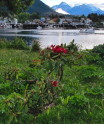


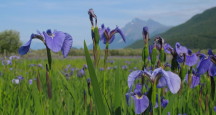


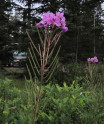
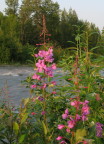
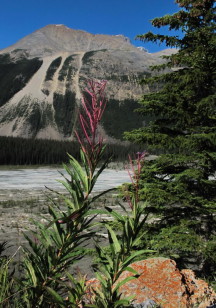
so good to meet you and paint with you. the fireweed blooms are long gone in Valdez, Alaska, and today the first snow of the season fell and fell and fell. it will be interesting to see what art it inspires this winter. happy painting.